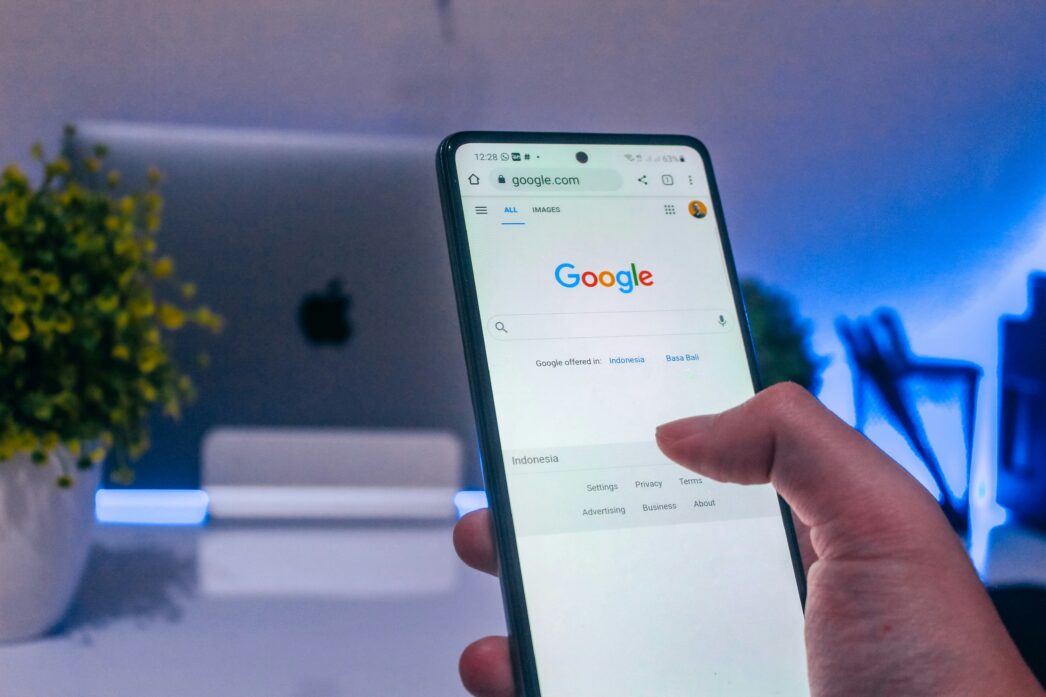
Running an ecommerce business in 2024 is tough. You’ve got competitors popping up everywhere. But while organic traffic and word of mouth are great, they take time. So how do you get in front of the right people right now?
That’s where pay-per-click (PPC) advertising comes in. It’s the fast lane for ecommerce businesses looking to drive visibility and sales quickly. But simply running ads isn’t enough anymore—2024 is shaping up to be a year of even stiffer competition and more advanced ad platforms. If you’re not using PPC strategically, you’re leaving money on the table.
In this guide, we’ll break down everything you need to know about PPC for ecommerce—from why it’s still crucial in 2024, to how you can use it to outsmart the competition and get your products in front of the people who are ready to buy.
What is Ecommerce PPC?
Ecommerce PPC (pay-per-click) is an online advertising model where ecommerce businesses pay a fee each time someone clicks on one of their ads. It’s a way to buy visits to your store, rather than waiting for them organically. PPC can drive instant traffic to your site, making it a critical tool for ecommerce stores aiming to boost visibility and sales quickly.
There are several key platforms where ecommerce PPC thrives. Google Ads is the most popular, allowing businesses to target customers through search results, display ads, and shopping campaigns. Bing Ads works similarly but can offer lower competition for keywords, making it an attractive option for some. Then there’s social media PPC—platforms like Facebook Ads and Instagram Ads help ecommerce stores reach specific audiences based on their interests, behaviours, and demographics.
How PPC Works for Online Retailers
The core of PPC revolves around bidding on keywords or placements in an ad auction. When someone searches for products related to your business, your ad is entered into a real-time auction. The platforms (like Google or Facebook) use an algorithm to determine which ad wins based on a combination of bid amount, ad quality, and relevance to the user’s search query.
For ecommerce brands, this means paying only for clicks—and ideally, those clicks lead to conversions. By creating hyper-targeted ads, you can show potential buyers the exact products they’re looking for, right when they need them. Whether it’s a Google Shopping ad showcasing your latest products or a Facebook carousel ad highlighting a seasonal sale, PPC gives ecommerce businesses the ability to reach customers who are ready to buy.
Why PPC is Crucial for Ecommerce Success in 2024
Driving Targeted Traffic
When it comes to ecommerce, getting the right eyes on your products is half the battle. PPC advertising allows you to do just that. Instead of crossing your fingers and hoping the right people stumble across your website, PPC lets you laser-target specific audiences based on demographics, behaviours, and even their location. You can tailor your ads to people who have already shown interest in products like yours or are actively searching for them. Basically, you’re putting your products right in front of potential buyers—exactly when they’re most likely to click “add to cart.”
Quick, Measurable Results
One of the beauties of PPC is how fast you can see results. Launch a campaign today, and by tomorrow, you can be tracking clicks, impressions, and sales. Unlike SEO, which takes time to build momentum, PPC delivers real-time performance metrics you can act on. Want to tweak your budget? Adjust your audience targeting? See what’s working and what’s not? PPC gives you all the data you need, allowing you to optimise campaigns on the fly and drive immediate traffic to your ecommerce store.
Cost-Effective Strategy
If done right, PPC is a cost-effective powerhouse for ecommerce businesses. The key here is in the details: it’s not about blindly throwing money at ads but carefully managing your budget to target high-intent customers. With precise targeting and smart bidding, you can maximise your return on investment (ROI). Instead of paying for clicks that don’t lead anywhere, you’re ensuring that your spend is focused on users who are likely to convert. In fact, for many ecommerce stores, a well-managed PPC campaign can deliver a higher ROI than many other marketing strategies.
4 Types of PPC Campaigns for Ecommerce
1. Search Ads
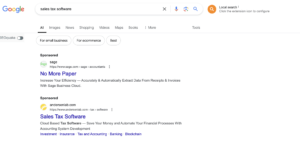
Search ads are the bread and butter of ecommerce PPC campaigns, especially for businesses looking to capture high-intent customers. These ads appear at the top of search engine results when someone actively searches for a product.
For example, if a user types “buy wireless headphones,” search ads allow your ecommerce store to be the first thing they see. This positions your brand directly in front of customers who are ready to make a purchase, making search ads one of the most effective tools for conversion-focused marketing. With proper keyword targeting and optimisation, search ads help ecommerce businesses drive highly targeted traffic right to their product pages.
2. Display Ads
While search ads target high-intent buyers, display ads are more about raising awareness and reaching potential customers earlier in their shopping journey. These visual ads appear across a vast network of websites and apps, allowing ecommerce businesses to get their products in front of a broader audience. With display ads, it’s not just about showing up for searches—it’s about being visible where your potential customers spend their time online.
Whether they’re reading blog posts or watching videos, display ads can showcase your products and build brand recognition. The visually appealing nature of display ads makes them perfect for reinforcing your brand or promoting specific products to users who may not yet be actively searching.
3. Shopping Ads
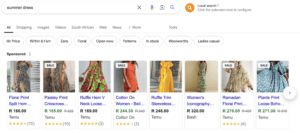
For ecommerce retailers, shopping ads—particularly Google Shopping Ads—are a goldmine. These ads display your product image, price, and other key details directly in the search results. When users search for specific products, your shopping ads show up with everything they need to know to make a purchase decision right away.
This ad format is especially effective because it offers more information upfront, including visuals and prices, which can lead to higher click-through rates and more conversions. Whether you sell electronics, clothing, or home goods, shopping ads streamline the buying process, allowing users to compare products without leaving the search page.
4. Social Media Ads (Facebook, Instagram, etc.)
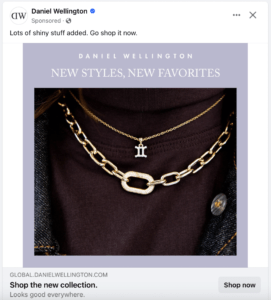
Social media ads bring another powerful layer to your ecommerce PPC strategy. Platforms like Facebook and Instagram allow ecommerce brands to tap into highly targeted audience segments based on interests, behaviours, and demographics. With social media PPC, you can promote your products through carousel ads, videos, or even dynamic ads that show personalised recommendations based on user browsing behaviour.
The interactive and visual nature of social media ads makes them perfect for engaging potential buyers with products they didn’t know they needed. Plus, the social element of these platforms enables users to share and discuss products with their networks, amplifying your reach even further.
Key Metrics to Track for Ecommerce PPC Success
- Click-Through Rate (CTR): Measures how often people click on your ad. A high CTR shows your ad is relevant and engaging.
- Conversion Rate: Tracks the percentage of visitors who make a purchase after clicking. It’s key to understanding how well your ads drive sales.
- Cost Per Click (CPC) & Cost Per Acquisition (CPA): CPC shows the cost of each click, while CPA tracks the cost of acquiring a customer. These help manage ad spend effectively.
- Return on Ad Spend (ROAS): Measures revenue earned for every dollar spent on ads. A high ROAS indicates a profitable campaign.
Best Practices for Ecommerce PPC in 2024
Keyword Research and Strategy
Effective keyword research is the backbone of successful ecommerce PPC campaigns. To enhance your strategy, consider the following:
- Use tools: Utilise tools like Google Keyword Planner, Ahrefs, or Semrush to uncover relevant and high-converting keywords.
- Focus on long-tail keywords: Long-tail keywords, such as “buy organic green tea online,” tend to have less competition and a higher likelihood of converting. These keywords reflect specific search intent.
- Example: A user searching for “best running shoes for flat feet” is more likely to purchase than someone merely looking for “shoes.”
- Integrate negative keywords: Filter out irrelevant traffic to improve your ad relevance and ROI.
- Example: If you sell premium running shoes, add “cheap” or “discount” as negative keywords to prevent your ads from showing to bargain hunters.
Ad Copy and Creative Optimisation
Creating compelling ad copy and visually engaging creatives is crucial for attracting clicks. Here’s how to optimise your ads:
- Craft compelling copy: Focus on clarity and urgency. Use action-oriented language and highlight unique selling points.
- Example: Instead of “We sell coffee,” say, “Indulge in rich, aromatic coffee delivered to your door—order now for 20% off your first purchase!”
- Design attractive visuals: Use tools like Canva or Adobe Spark to create eye-catching visuals that align with your brand identity.
- Implement A/B testing: Test different ad variations to refine your strategy.
- Example: Compare two different headlines:
- “Limited Time Offer: 25% Off All Running Gear!”
- “Get Ready for Spring: 25% Off Running Gear Today!”
- Analyse which ad garners more clicks and conversions, and iterate based on those findings.
- Example: Compare two different headlines:
AdBidding Strategies and Budget Management
Managing your budget is key to maximising your return on investment (ROI) in ecommerce PPC:
- Explore bidding options:
- Automated bidding: Consider options like Target CPA (Cost Per Acquisition) to let Google optimise your bids for specific cost-per-conversion targets.
- Manual bidding: Maintain control over individual keyword bids. If a keyword like “eco-friendly yoga mats” is performing well, increase your bid to boost visibility.
- Set a clear monthly budget: Allocate funds based on historical data, focusing more on high-performing campaigns.
- Monitor performance: Use platforms like Google Ads and Google Analytics to track campaign performance closely. Adjust budget allocations based on which campaigns yield the highest conversions and lowest costs.
A/B Testing and Campaign Optimisation
Ongoing A/B testing can significantly improve your PPC results:
- Test different ad variations: Regularly test headlines, descriptions, and call-to-action buttons.
- Example: For a summer sale, test:
- “Shop the Summer Sale!”
- “Summer Deals You Can’t Miss!”
- Example: For a summer sale, test:
- Use testing tools: Utilise tools like Optimizely or Google Optimise to streamline the testing process.
- Evaluate performance metrics: Look at metrics such as click-through rates (CTR) and conversion rates to determine which variations perform best.
- Test landing pages: Experiment with landing page designs to see which engages customers more effectively.
- Example: Compare a landing page for “Luxury Bedding” with high-quality images and testimonials versus a more basic layout.
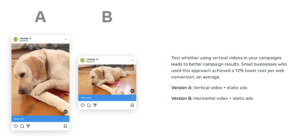
Use Conversion Tools to Maximise PPC Campaigns
To get the most out of your PPC campaigns, leveraging a reliable conversion tool is essential. These tools help businesses track and analyse user behaviour, offering insights into which ads drive valuable actions and conversions.
A standout example is Kommo, a messenger-based CRM designed to enhance the effectiveness of PPC campaigns. With Kommo, businesses can streamline their efforts by targeting the right audience and achieving higher conversion rates. Its robust integration capabilities allow seamless connections with social media platforms like Facebook Ads, Instagram, and WhatsApp, enabling you to follow up with potential customers quickly and effectively.
Kommo also supports multi-channel communication, ensuring you can engage with leads across various platforms. By directing leads into an organised digital pipeline, Kommo ensures they are tracked, managed, and nurtured efficiently. This makes it a valuable addition to any PPC strategy, boosting engagement and maximising campaign ROI.
Common PPC Mistakes Ecommerce Brands Should Avoid
To boost your ecommerce PPC campaigns, steer clear of common pitfalls. One big mistake is ignoring negative keywords. Failing to filter out irrelevant terms can drain your budget. Use Google Ads to review search term reports and add negative keywords that don’t fit your products. For example, if you sell luxury watches, consider adding “cheap” as a negative keyword to avoid unqualified clicks.
Another mistake is overlooking mobile users. With more shoppers using smartphones, optimising for mobile is a must. Ensure your ads and landing pages load quickly and are easy to navigate. Tools like Google’s Mobile-Friendly Test can help you assess performance, capturing a larger share of mobile shoppers.
Finally, never underestimate your landing pages. Poorly designed pages can ruin your PPC efforts. Make sure your landing pages are relevant to the ads and feature strong calls-to-action. Use A/B testing to refine layouts and copy. Tools like Unbounce or Instapage can help you create effective landing pages without needing technical skills. Focus on landing page optimisation to improve your PPC performance and drive better results.
How to Scale Your Ecommerce PPC Campaigns
Expand to New Ad Platforms
A lot of people only focus on Google Ads when it comes to PPC, which makes sense as it has an enormous user base. But, your target audience may be elsewhere, or they may be more receptive elsewhere.
To scale your ecommerce PPC efforts, consider branching out to additional ad platforms like Bing, Facebook, TikTok, or even emerging channels. Each platform has unique user demographics and can help you tap into new audiences. For instance, TikTok’s engaging video format is perfect for visually showcasing your products to younger consumers. Begin with a small budget to test the waters and analyse performance before fully committing to a larger ad spend.
Try Out Dynamic Remarketing
Dynamic remarketing ads are a powerful way to re-engage visitors who have previously interacted with your site. These ads automatically show products that users viewed, along with tailored recommendations based on their browsing behaviour. This targeted approach increases the likelihood of conversion, as it speaks directly to user interests. Set up dynamic remarketing through Google Ads to effectively remind potential customers of what they might be missing out on.
Leverage Automation and AI Tools
Embrace automation and AI tools to streamline your PPC management. AI-driven tools can optimise bidding strategies, ad placements, and even personalise ads based on user behaviour. Platforms like Google Ads and Facebook Ads offer automation features that save you time while maximising your ROI. By using these advanced tools, you can focus on strategy while the software handles the repetitive tasks, allowing your campaigns to scale more efficiently.
Conclusion
Scaling your ecommerce PPC campaigns in 2024 is all about leveraging the right strategies and tools. By expanding to new ad platforms, utilising dynamic remarketing, and embracing automation, you can enhance your visibility and drive conversions. Remember, successful PPC isn’t just about spending more; it’s about spending smarter. Continuously analyse your performance metrics, test new strategies, and optimise your campaigns to stay ahead of the competition.
Ready to take your ecommerce PPC to the next level? Contact us today to learn how our expert PPC services can help you maximise your online presence and boost your sales!



